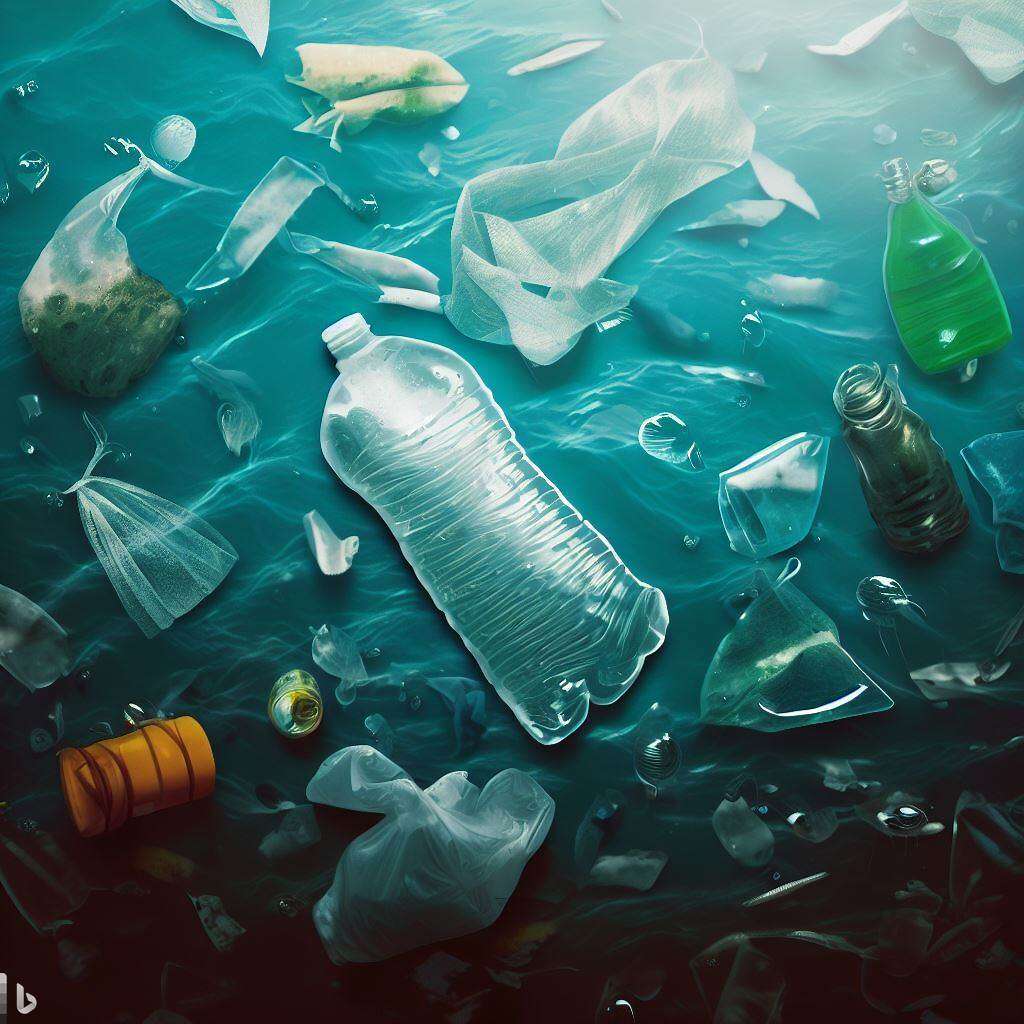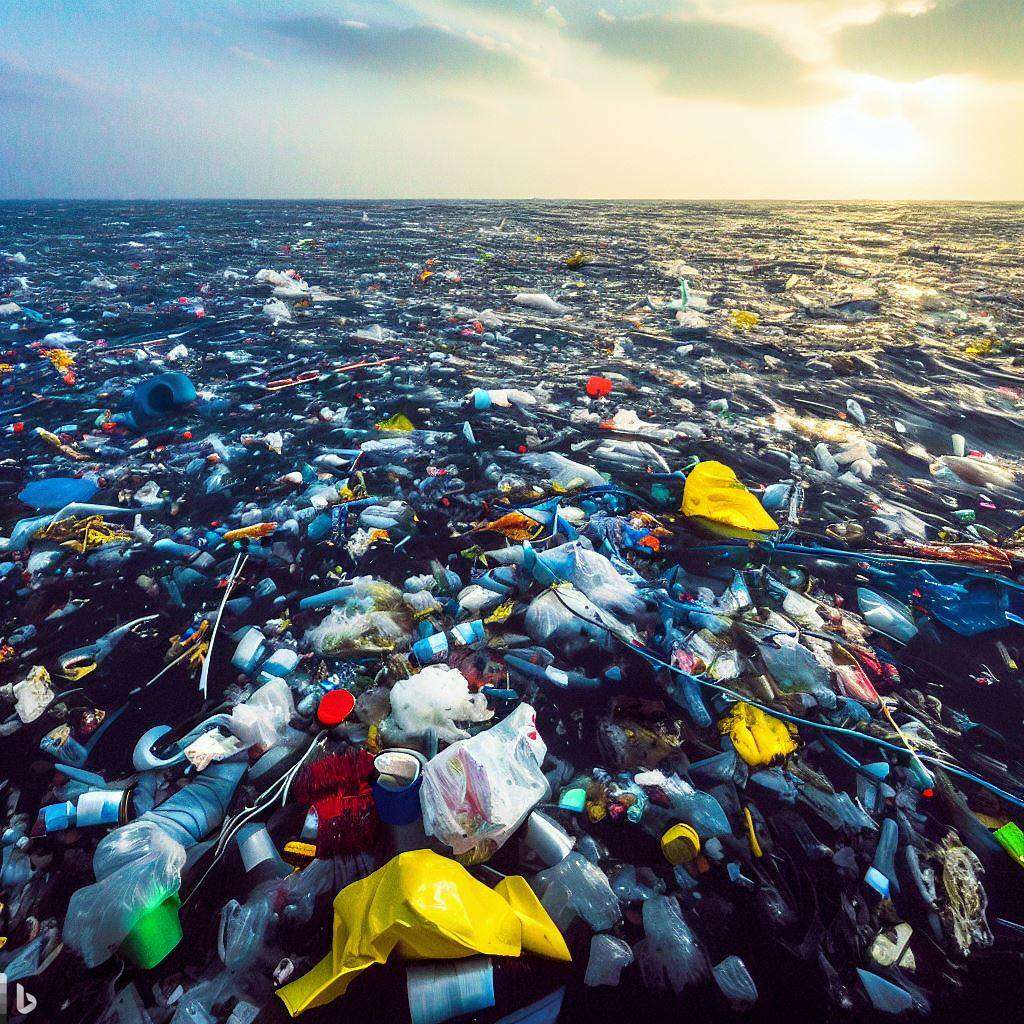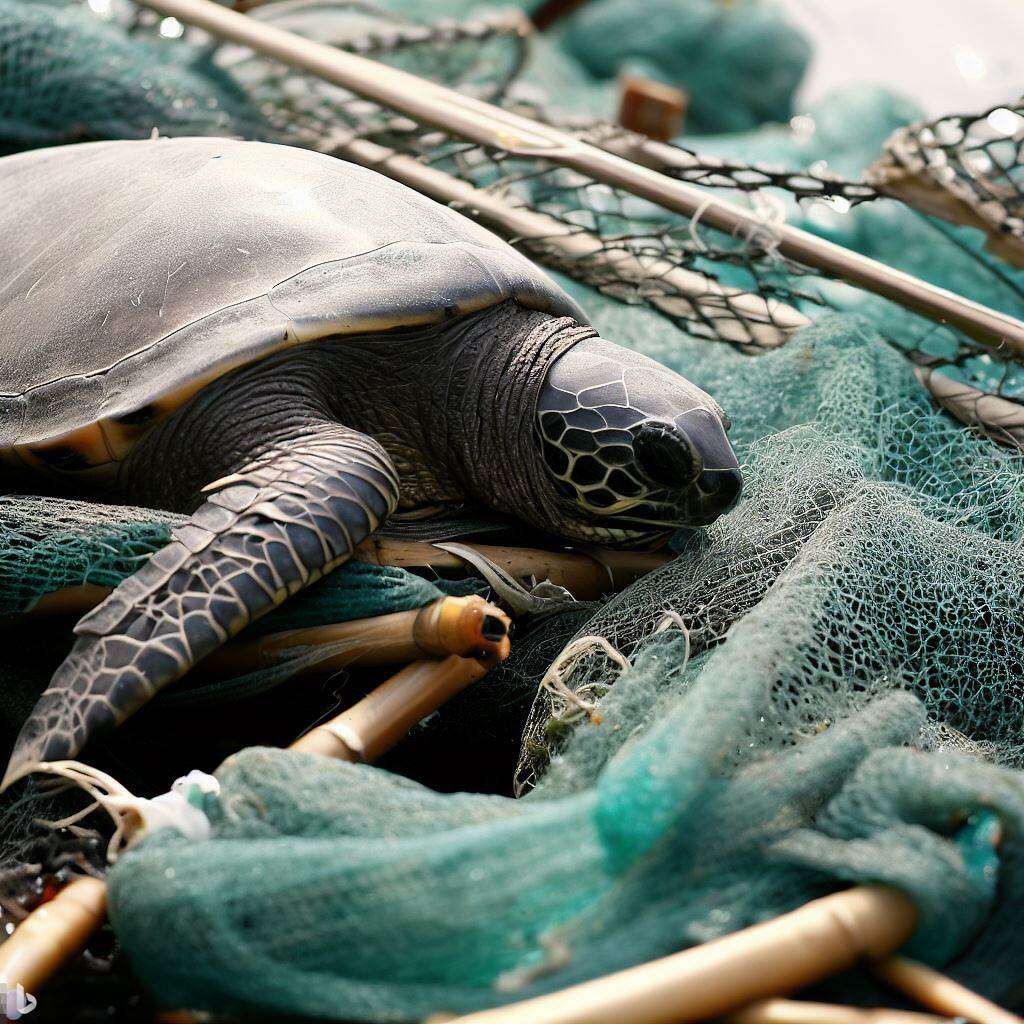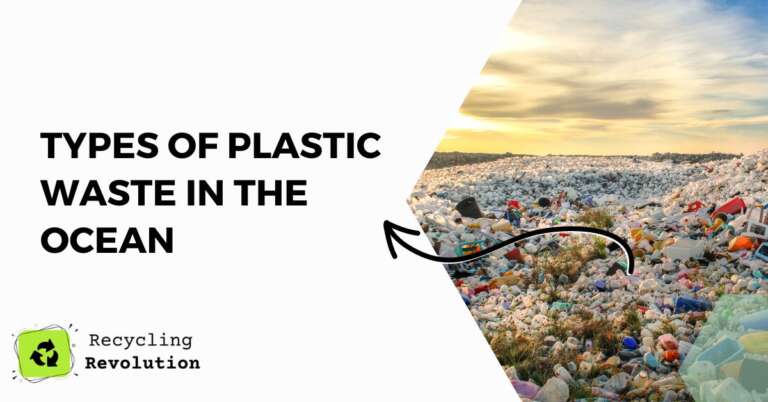You may have heard that plastic pollution in the ocean is a problem, but do you know just how bad it is?
The truth is, the scale of plastic waste in the ocean is shocking, and the impact it has on marine ecosystems is devastating.
In this article, we’ll explore the different types and sources of plastic waste in the ocean, the effects it has on marine life and the environment, and what you can do to help.
How Much Plastic Waste is in the Ocean
Plastic pollution is a growing environmental issue that has detrimental effects on marine ecosystems and the creatures that inhabit them.
According to recent estimates, there are around 5.25 trillion pieces of plastic in the ocean, with a total weight of approximately 269,000 tons.
| Plastic Item | Estimated Amount in the Ocean | Time to Degrade |
|---|---|---|
| Plastic bags | 2.2 billion | 10-1,000 years |
| Plastic bottles | 480 billion | 450 years |
| Straws | 8.3 billion | 200 years |
| Food packaging | 1.5 trillion | 5-400 years |
| Cigarette butts | 4.5 trillion | 10-12 years |
| Fishing gear | 640,000 tons | 600 years |
| Plastic cutlery | 40 billion | 10-1,000 years |
| Beverage cups | 16 billion | 30 years |
| Balloons | 5.5 million | 6 months – 4 years |
| Microbeads | 8 trillion | Never |
| Plastic toothbrushes | 1 billion | 400 years |
Types of Plastic Waste in the Ocean
There are various types of plastic waste in the ocean, including microplastics, macroplastics, ghost nets, and plastic bottles and bags.
Microplastics are tiny plastic particles that measure less than 5mm in diameter, while macroplastics are larger plastic objects such as fishing gear and packaging.
Ghost nets are fishing nets that have been lost or abandoned in the ocean, which can continue to trap and kill marine animals.
Plastic bottles and bags are some of the most common types of plastic waste found in the ocean.

How Plastics Pollute The Ocean
Plastic waste in the ocean comes from both land-based and ocean-based sources.
Land-based sources include plastic that is not properly disposed of and ends up in rivers, which then flow into the ocean.
Ocean-based sources include plastic waste that is generated by ships and offshore oil and gas platforms.
Illegal dumping and littering are also significant sources of plastic waste in the ocean.
- Improper disposal: Plastic waste that is not disposed of properly can end up in rivers or on beaches, where it is eventually carried into the ocean by currents or wind.
- Littering: Littering is a major source of plastic pollution in the ocean, as plastic waste that is left on streets or beaches can be blown or washed into storm drains and eventually end up in the ocean.
- Sewage systems: Microplastics, tiny plastic particles less than 5mm in diameter, can be washed down the drain and end up in sewage systems. If these systems are not properly filtered, microplastics can be released into the ocean.
- Runoff: Rainwater can wash plastic waste from streets and other areas into storm drains, which can eventually flow into the ocean.
- Fishing gear: Fishing gear, such as nets and lines, can become lost or abandoned in the ocean, where they continue to trap and kill marine animals.
- Shipping and offshore platforms: Ships and offshore oil and gas platforms generate large amounts of plastic waste, which can end up in the ocean if not properly disposed of.
The Scale of Plastic Pollution in the Ocean
The amount of plastic waste in the ocean is staggering.
According to a study by the Ellen MacArthur Foundation, by 2050, there could be more plastic in the ocean than fish, by weight.
The Great Pacific Garbage Patch, a collection of plastic waste in the North Pacific Ocean, is estimated to be twice the size of Texas.
The patch contains approximately 1.8 trillion pieces of plastic, weighing a total of 80,000 tons.
| Name | Size | Location | Age |
|---|---|---|---|
| Great Pacific Garbage Patch | 1.6 million km² | North Pacific Ocean, between Hawaii and California | Over 30 years old |
| South Pacific Garbage Patch | Unknown | Off the coast of Chile and Peru | Unknown |
| Indian Ocean Garbage Patch | 5.8 million km² | Indian Ocean, near the Maldives and Sri Lanka | Unknown |
| North Atlantic Garbage Patch | 4.5 million km² | North Atlantic Ocean, between North America and Europe | Unknown |
| South Atlantic Garbage Patch | Unknown | Off the coast of Argentina | Unknown |

Effects of Plastic Pollution on Marine Ecosystems
Plastic pollution has a devastating impact on marine ecosystems.
Marine animals, such as turtles and dolphins, can become entangled in plastic waste, causing injuries or death.
Additionally, marine animals may mistake plastic for food and ingest it, which can lead to blockages in their digestive systems and starvation.
Plastic pollution also has a negative impact on coral reefs and other ecosystems, as plastic can smother and kill coral.
Efforts to Reduce Plastic Pollution
Governments, organizations, and individuals are taking steps to reduce plastic pollution in the ocean.
International agreements, such as the United Nations’ Clean Seas campaign and the Ocean Cleanup’s System 001, aim to remove plastic waste from the ocean.
Alternative materials to plastic, such as biodegradable packaging, are being developed and used by companies.
Finally, individuals can reduce plastic waste by using reusable bags, water bottles, and straws, and properly disposing of plastic waste.
How You Can Help Stop Plastic From Entering Into The Ocean
Here are a few easy ways you can easily help my impact without spending extra money.
As result of plastic waste the main cause is overconsumption and not properly recycling.
We’ve covered in great detail how to recycle and even highlighted the various programs available that can assist you.
Here are the top actionable tips you can enact and teach your friends and family.
- Reduce your plastic use: One of the most effective ways to reduce plastic pollution is to use less plastic. You can start by bringing your own reusable bags, water bottles, and coffee cups instead of using single-use plastic versions.
- Properly dispose of plastic waste: Make sure you dispose of plastic waste properly by recycling it or putting it in the trash. Avoid littering or dumping plastic waste in the environment.
- Participate in beach cleanups: Join a beach cleanup or organize your own with friends or family. You can help remove plastic waste from beaches and prevent it from entering the ocean.
- Waterway and River Clean ups: If you are not near a beach you can volenteer to help clean up debris and waste that ends up in your local riverways.
- Support plastic reduction initiatives: Look for companies and organizations that are working to reduce plastic use and support their initiatives. You can also support legislation that aims to reduce plastic pollution.
- Educate others: Spread awareness about plastic pollution and its impact on the environment. Encourage others to reduce their plastic use and properly dispose of plastic waste.
- Donate to organizations: Consider donating to organizations that are working to clean up plastic pollution in the ocean or prevent it from happening in the future. Your support can help fund research, education, and cleanup efforts.
Marine Life Mortality Rates
It is difficult to estimate the exact number of marine life that die each year as a result of plastic pollution, as the impact can vary depending on a variety of factors.
However, studies suggest that millions of marine animals are killed each year due to plastic debris in the ocean.
Here’s a table outlining some of the types of marine life affected by plastic pollution and the estimated number of deaths each year:
| Marine Life | Estimated Number of Deaths per Year |
|---|---|
| Sea turtles | Over 1 million |
| Seabirds | Over 100,000 |
| Marine mammals (such as whales and dolphins) | Thousands |
| Fish and other marine animals | Unknown, but likely in the millions |

Conclusion
Plastic pollution in the ocean is a significant problem that requires action at all levels.
The scale of plastic waste in the ocean is shocking, and its impact on marine ecosystems is devastating.
However, by taking steps to reduce plastic waste and supporting initiatives that aim to clean up the ocean, we can make a difference.
Let’s work together to ensure a cleaner, healthier future for our planet and its marine life.
FAQ
What percentage of the ocean is plastic?
It is difficult to estimate the exact percentage of the ocean that is plastic, but studies suggest that there are more than 5 trillion plastic pieces weighing over 250,000 tons in the world’s oceans.
How much plastic will be in the ocean by 2050?
If current trends continue, it is estimated that by 2050, there will be more plastic in the ocean than fish (by weight), with an estimated 850 million tons of plastic in the ocean.
How much plastic is in the ocean 2023?
It is difficult to estimate the exact amount of plastic in the ocean in 2023, as it can vary depending on various factors such as location, currents, and weather conditions.
However, studies suggest that there are currently over 5 trillion plastic pieces weighing over 250,000 tons in the world’s oceans, and this number is expected to continue to rise.
🧴 Plastic Recycling Estimator
🔍 Plastic Buyback Facts
Most buyback programs accept PET (water bottles), HDPE (detergent containers), and PP (caps, cups). Light plastics like bags and wrappers are harder to recycle, but containers and jugs are highly valued. Recycling plastic reduces landfill overflow and saves fossil fuels.

